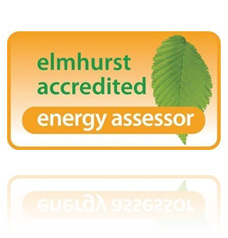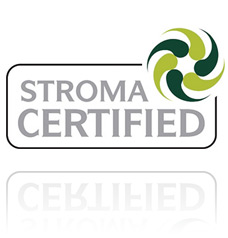Minimum Energy Efficiency Standard (MEES)
Do you know the energy rating of your rented property?
As a landlord, ignoring MEES could be a very costly mistake.
Any rented building or part of a building let on or after 1st April 2018 must have an energy rating of E or over. Properties with an F or G rating must be upgraded before they are let. It is estimated that 20-25% of commercial property could be below standard.
Not knowing future liabilities could leave a landlord with severe financial penalties or with a property that cannot be let. If sold, ‘substandard’ properties, those rated F or G, are likely to have a much reduced sale value.
It may be possible to apply for exemptions but not until the EPC rating has been established. Only at that point will the landlord be able to get quotations to make the necessary improvements.”
The built environment has been identified by government as a major contributor to Greenhouse Gas (GHG) emissions. This poses a threat to the UK meeting its carbon reduction targets for 2020 and 2050. Government estimates that up to 25% of commercial properties hold the lowest EPC ratings of F or G. While Building Regulations ensure that new properties meet current energy efficiency standards, MEES will tackle the UK’s older buildings.
1119
From April 2018, a new legal standard for minimum energy efficiency will apply to rented commercial buildings.
At the moment commercial buildings have an energy efficiency rating that goes from A – G with F and G being the worst performing. What the new law will do is introduce a minimum standard of E which means that buildings cannot be rented out unless they meet that standard.
From 1 April 2018, landlords of buildings within the scope of the MEES Regulations must not renew existing tenancies or grant new tenancies if the building has less than the minimum energy performance certificate (EPC) rating of E unless the landlord registers an exemption.
After 1st April 2023 landlords must not continue to let any commercial properties which have an EPC rating of less than E unless the landlord registers an exemption.
It is important to note that although the minimum standard is currentlyan E it coud rise to a D or even a C in the future.
What buildings and tenancies do MEES apply to?
Working out if a building and tenancy are caught within the scope of MEES is not always straightforward. MEES does not apply to:
-
- Agricultural buildings with a low energy demand.
- Buildings with planning permission to be demolished.
- Workshops without offices or toilets.
- Stand alone buildings with a useful floor area of less than 50 m2
- Buildings used as places of worship.
- Certain Listed Buildings.
- Tenancies of less than 6 months (with no right of renewal).
- Owner occupied buildings.
What are the exemptions?
What are the exemptions? Landlords can let a building to which the MEES Regulations apply but which is below the minimum standard if any of the following exemptions apply:
The Golden Rule’
The ‘Golden Rule’: Where an independent assessor determines that all relevant energy efficiency improvements have been made to the property or that improvements that could be made but have not been made would not pay for themselves through energy savings within seven years. There are numerous examples of “relevant” energy efficiency improvements which include double-glazing and pipe work insulation which need to be considered; wall-insulation measures are not required where an expert determines that these would damage the fabric of the property.
Devaluation:
Devaluation: Where an independent surveyor determines that the relevant energy efficiency improvements that could be made to the property are likely to reduce the market value of the property by more than 5%.
Third part consent:
Where consent from persons such as a tenant, a superior landlord or planning authorities has been refused or has been given with conditions with which the landlord cannot reasonably comply. Exemptions must be registered on the central government PRS Exemptions Register. The register opens on 1st April 2018. The exemptions are valid for five years only and cannot be transferred to a new landlord.
Penalties for non-compliance in respect of commercial properties:
The MEES Regulations will be enforced by Local Weights and Measures Authorities (LWMAs). LWMAs will have powers to impose civil penalties which are set by reference to the property’s rateable value. Penalties in respect of non compliance for non-domestic properties
- The penalty for renting out a property for a period of fewer than three months in breach of the MEES Regulations will be equivalent to 10% of the property’s rateable value, subject to a minimum penalty of £5,000 and a maximum of £50,000.
- After three months, the penalty rises to 20% of the rateable value, with a minimum penalty of £10,000 and a maximum of £150,000.
Where a property is let in breach of the MEES Regulations or where a penalty is imposed, the lease as between the landlord and the tenant remains valid and in force.
What is the impact on freehold investors and developers and what they should do now:
The key issue for freehold investors is that there is a threat of reduction in value of any property assets which do not meet the minimum standard. Further, freehold investors may struggle to find new tenant landlords willing to sub-let a property if it means they will need to carry out improvements.
On the other hand, freehold investors with tenant landlords already in place will benefit from having energy improvements made to their reversionary asset paid for by the landlord tenant. Landlords, investors and developers can prepare now by auditing their portfolios to identify which properties may be within scope of the MEES Regulations.
What happens next?
What happens next? Amendments in 2015 to the Energy Performance of Buildings (England and Wales) Regulations 2012 now require local authorities to report to government, on an annual basis, on enforcement activities undertaken in relation to EPCs. This may deliver more interest in EPCs and more active enforcement from LWMAs. The government published its Guidance for Landlords (PDF) on 23 February 2017. The Guidance for Landlords is designed to help landlords, freehold investors, lenders and enforcement authorities to prepare for the MEES Regulations.
MEES is set to come into force on 1 April 2018 and parties are well-advised to get to grips with how the MEES Regulations will affect their properties and the best strategy for compliance. Failing to understand the impact of the MEES Regulations
We are accredited with the following organisations:


